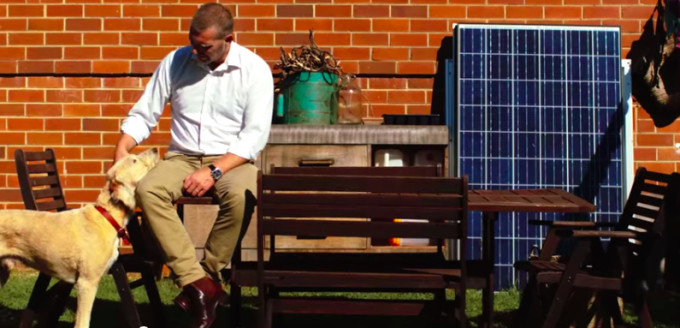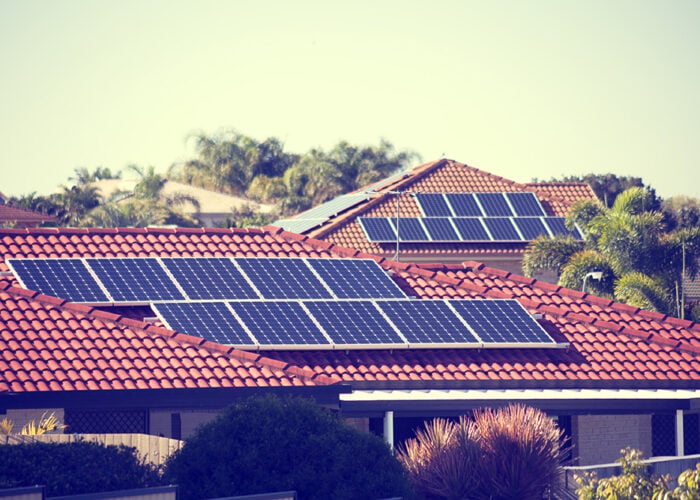
Australia recently celebrated reaching 5GW of solar capacity not long after hitting a landmark 1.5 million solar systems. It has the largest penetration of rooftop systems per capita in the world although the success of rooftop in the sunburnt nation hasn’t come without overcoming significant barriers from the incumbent energy industry and various governments. Research firm SunWiz has also reported that the residential market could be entering permanent decline.
Nigel Morris, chief executive at solar firm RoofJuice Australia, who has been in the solar game for more than two decades, explains how Australia reached 5GW and describes some of the political challenges ahead.
Unlock unlimited access for 12 whole months of distinctive global analysis
Photovoltaics International is now included.
- Regular insight and analysis of the industry’s biggest developments
- In-depth interviews with the industry’s leading figures
- Unlimited digital access to the PV Tech Power journal catalogue
- Unlimited digital access to the Photovoltaics International journal catalogue
- Access to more than 1,000 technical papers
- Discounts on Solar Media’s portfolio of events, in-person and virtual
PV Tech: What was it like in the early days of Australian solar?
Nigel Morris: Around 23 years ago, while starting out with off-grid solar, we were speculating whether one day it would make sense to go to urban environments and attempt to sell solar to people in the city, but you simply could not do it.
The first grid-connected PV system in Australia was installed on a test site in 1993 standing at 1.4kW capacity for a total of AU$40,000 (US$29,000). Christened as ‘Solar 1’ it cost AU$27 per watt. It is still operational to this day. The panels were fine, but the inverters were a far cry from what we have today.
Nowadays, the average price of solar in Australia is now hovering around AU$1.30 installed with AU$0.80 at the low end.
While working for BP around 1997, I worked on patenting some of the first grid-connected kit in Australia. I encouraged my dealer network to sell grid-connect systems and they all laughed saying there was no future in it. They stuck to off-grid and battery systems.
When did the case for solar improve?
The first rebate programmes started to come and go with political whim. Initially it was generous at around AU$8,000 per system. This got the market going and it rolled for a while at a few thousand system installations per year. This was followed by fairly major initiatives including the Solar Cities programme, which helped deploy solar in around seven cities in combined projects. Furthermore in the Sydney Olympic village, which was one of the biggest suburbs in the world at the time, there were 1,000 solar systems. Most of this progress was <1.5kW systems.
The first feed-in tariffs (FiTs) were announced in 2005, although these were all politically motivated, because back then the community and business had become very concerned about climate change. New South Wales (NSW) announced a AU$0.60 gross tariff, which went ballistic as it happened to come at the beginning of the first major solar price drop. Various other tariffs were introduced and most states brought in generous, long-term net tariffs.
With the combination of the price plummeting, ferocious competition and the generous tariffs, system sizes shot up to around 3.5-4kW capacity.
Then, having had just 20 solar companies when I first started, there were 3,500 firms by 2005. The market grew and by 2012 it peaked by installing 1GW in a year of which 98% was small-scale residential solar.
What caused the market to peak?
The governments finally caught up and realised that all these tariffs were going to cost them billions of dollars, but they were not listening. Even the industry said the market was going to overheat. There was a change in government and attitude and the pendulum suddenly swung all the way back. The governments abruptly halted all the subsidies and even tried to wind them back.
We are still in quite a conundrum because more than 10% of Australia's generation capacity is from rooftop solar now. A lot of coal capacity has been coming offline, and the coal price has plummeted from AU$150 a tonne to just AU$35. Once the coal industry realised solar was eroding their profits, it switched to a full-scale state, federal and corporate-based attack on the solar industry. Even our former prime minister Tony Abbott was blatantly lying about the impacts of solar on the networks and there was volatile scaremongering, which slowed down consumer confidence.
However, the solar industry consolidated with the price settling at around AU$1.20-1.50.
Nationally we have more than 20% penetration of rooftops (1.5 million rooftops out of eight million have solar). In more than three dozen postcodes we have 40% rooftop penetration, which is both prolific and clustered. This has introduced some real technical challenges.
Reactive power requirements have been brought in as well as export limitations in several states, individual capacity size limits in some parts of the network and broader network capacity restrictions.
Are we seeing evidence of retrospective actions?
Electricity networks never expected demand to fall and a reverse was unthinkable, but there was a reverse. Furthermore, the 1.5 million solar rooftops also take another 10% out of the capacity market, so the utilities and the networks are fighting back as they are losing customers.
They have reduced the energy component of electricity pricing by flattening it and in some cases dramatically increasing fixed charges to protect their revenue streams. That significantly diminishes solar’s ability to reduce people’s bills. So that is the next battleground for us – how do we get really cost reflective energy pricing which is demand-based?
At best for exported solar energy, producers will get the wholesale price, which is AU$0.50-0.60/kWh. It is also very hard to predict how much someone is going to self-consume versus how much they are going to export because the vast majority of Australians do not have interval, digital or smart meters. Nobody knows what their demand profile is except the utilities and they do not share that information.
In NSW and Queensland somewhere between 15-20% of state revenue comes from coal and transmission and distribution networks so as you diminish demand you also diminish state revenue and the states can’t afford to give this away.
There have been three very similar findings encouraging retrospective actions that have come out just in the last few months in Queensland, Western Australia and Victoria. Meanwhile the solar industry does not have the money to fight legal cases against the networks either.
The networks are trying to keep the status quo through very subtle regulatory changes like standing charges and reactive power. In Queensland, if you want to put in a 3kW system, you are forced to put a reactive power control device on that will cost you a AU$1,000.
We do have largest network in the world, which is long and reaches remote areas. There are parts of it that are very stressed and heavily loaded. However, rather than encouraging distributed generation in stressed areas, consumers have to pay for the reactive power controls.
What is the outlook for solar ahead?
It’s difficult for the average solar company to compete with the networks; however, while residential did decline by 30% last year due to Tony Abbott’s scare tactics, it has settled to installation figures of around 500-600MW per year along with 200MW commercial solar, which is a segment we haven’t even touched the sides of yet. Under new prime minister, Malcolm Turnbull, the government has softened its stance, but it has yet to change any of its policies.







